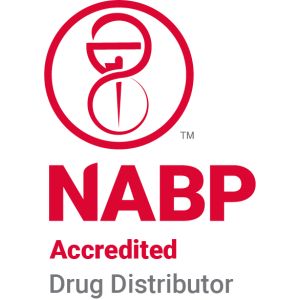Drive Down Inventory Costs with Better Loaner Kit Management
What happens at your facility when a loaner kit returns from the field?
Do you have a dedicated operations cell in charge of kit inspection? Or do you have employees inspecting kits while managing a host of other duties?
Often, kits and consignment inventory sit in the hands (or car trunks) of your sales reps. When that’s the case, many companies struggle with traceability and visibility of inventory—and the status of the parts remains unknown. Other questions arise, too: Have the kits been inspected? Are all kit contents on the bill of material accounted for? Are the parts ready for the next surgical case?
Without an appropriate tracking system, companies lack confidence in understanding what product is ready for surgery and where that product actually is. This lack of traceability can prove especially problematic when it comes to regulatory inspections and documented evidence of inventory inspections.
Managing loaner kits at the highest level can be a huge pain point for OEMs. It is incredibly challenging to ensure that every kit is 100% ready for the next surgery, that it contains all required parts, and that it returns from the field exactly as it was sent out—for each case. Establishing efficient processes for loaner kit inspection, decontamination and replenishment is challenging at the best of times, but even more so when an expedited turn is required to get the kit to surgery the next day.
While not a core competency of most OEMs, managing loaner kits efficiently is critical to success. Through the creation and repetition of quality-driven processes, it can be done at the highest level in order to accomplish positive patient outcomes, serve your customer base, and drive down inventory costs. Here’s what that means:
Bill of material
Also known as the procedure-specific toolbox, loaner kits can contain a range of pieces—from just a few to hundreds. It is crucial that each item in a kit is accounted for and is verified against the most current bill of material.
The bill of material identifies each part in a specific kit. When a kit returns from a case, its contents are inspected (visual and function tests) and verified to ensure the kit is ready for the next case.
Lot traceability
Each part in a loaner kit must be traceable via a lot number to ensure visibility of each part at all times.
This is where many OEMs struggle. If you’re among them, imagine the power of being able to quickly and accurately identify where every part is, in every kit, and if a kit is in the field, who has it.
Decontamination
The kit’s contents are decontaminated post-surgery, either through washer disinfectors or autoclave cleaning to ensure all contents are safe for employee handling.
Precision inspection and replenishment
If the kit is complete with all parts, does each part still meet its functional requirements? Have any parts been damaged? Is the part revision correct? In other words, do you have 100% confidence that your kit is ready for the next surgery?
Precision inspection involves not only gross visual checks of the parts but also any functional verifications that might be required. If individual parts are missing or defective, they’re replaced. The result is the confidence that every part in the kit is in its correct location and is going to perform in the next surgery exactly as it is intended to.
Repeatable Process = Upside
Every time a kit returns from the field, the loaner process cycle repeats: decontamination, inspection, replenishment and pack out. Consider the cycle time kit management takes, and the potential offered by outsourcing. If you’re doing it in-house, can you turn every kit within 24 hours of receipt? Can you promise same-day expedited service or confirm emergency order deliveries through 11PM CST? Can you provide expedited weekend and holiday shipments?
That’s what outsourcing with the right partner provides: quality, scale, confidence, and responsiveness to get your kit where it needs to be quickly and safely without increasing your fixed costs.
At Millstone, we get it. We believe quality drives patient success. That’s why we’ve perfected all the capabilities medical device manufacturers need to get to market. Today we offer post-manufacturing and aftermarket services to more than 50 customers, including the largest orthopedic companies in the world. We are constantly evolving our processes and services to help OEMs achieve sustainable success. We offer clean room packaging, medical device specific warehousing, finished goods distribution, loaner kit management, advanced inspection and after-market services—all with an unparalleled focus on quality.
What could we help you do better? Learn more at https://millstonemedical.com.
Comments are closed.



